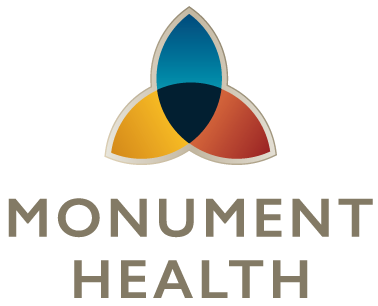by Ashley Thurow
I am often asked what we do here at Monument Health. As a clinically integrated network, or CIN, our involvement with healthcare providers and insurance companies is quite complex, and often difficult to explain. Clinically integrated networks operate between insurance companies, doctors, and patients, and we work to align incentives among the three parties to better coordinate health care. CINs are a powerful catalyst for achieving what we call the “Triple Aim” of health care; a triad of goals intended to be accomplished in tandem— improving the experience of care, improving the health of populations, and reducing per capita costs of health care.
Reducing healthcare costs and improving quality have been proven to be mutually achievable goals using the CIN care model. We are able to do this because we hold physicians accountable to standards around cost reduction, targeted quality improvement, and access. We focus on preventive care and helping patients live healthy lives, and we monetarily incentivize doctors when they do achieve better health outcomes. In other words, we have financial responsibility to ensure our provider and hospital partners are delivering better care according to our network standards.
Compared to the rest of the United States, Colorado is behind the curve in utilizing CINs to achieve the Triple Aim. States like Utah and California, for example, have had CIN-like organizations engaged in this work for decades. The ultimate goal, which can be seen quite prominently in those states, is downside risk: doctors taking on full medical AND financial responsibility for their patients. Kaiser Permanente, Geisinger Health System, and Intermountain Healthcare are all well-known examples of organizations that operate in this manner. These organizations align providers and health insurance together in their systems in order to reward responsive care and cost containment. We refer to this full risk, all-inclusive scenario as capitation.
In an all-inclusive or capitated model, doctors are paid one fixed amount to care for an entire population of people. The physician then has the latitude to engage with its patients much like the house call doctor of the early 1900’s— developing a close, personal relationship focused on prevention and staying healthy. Not only is this model more rewarding for doctors and patients, but it also saves healthcare consumers a whole lot of money.
For a healthcare entity like a hospital or primary care clinic, jumping into a capitated model is a complicated endeavor that requires a considerable amount of infrastructure, particularly data infrastructure. Most CINs begin by taking on partial risk while they build out their infrastructure. An example of partial risk is the arrangement we have with Rocky Mountain Health Plans to support their Medicare Advantage plan. Our providers aren’t paid an all-inclusive, fixed amount. However, we do partner together to manage costs and patient care. If we are successful, and the plan is rated high quality with reasonable spending, we all share in the financial benefits.
More examples abound here at Monument Health, where we specialize in supporting hospitals and primary care providers with healthcare data for the purpose of better coordinating patient care. We have built a data infrastructure that allows us to look at medical claims and provider Electronic Health Records (EHRs) in order to understand areas where patients are seeking too much care, or not enough. We leverage this data to outreach to patients to encourage them to come in to see their primary care doctor for their annual exams, preventive bloodwork, cancer screenings, and more. We work closely with doctors in the community to better coordinate their patients’ care so that, for example, patients are fully supported when they leave the hospital after experiencing an emergency.
Our goal is to keep patients healthy, so they are less likely to visit the emergency room—the most expensive place to go for care—to address their health needs. The result is a healthier community, which benefits us all, via stronger patient-clinician relationships and lower costs.
Statewide, there are thousands of doctors starting to take on financial risk for their patients, coordinated with the help of CINs. On the Front Range, Centura’s Colorado Health Neighborhoods, UC Health’s Coordinated Care Colorado, and Children Hospital’s Pediatric Care Network are all great examples of similar entities engaged in this work.
Monument Health is the largest CIN on Colorado’s Western Slope, and among the largest in the state. We currently serve over 20,000 patients, but I anticipate that number to quadruple in the coming years, as the federal government along with private insurance companies continue to push the imperative for doctors to move into downside financial risk.
Ultimately, doctors participating in CINs in order to take on financial risk is good news for patients, because it fosters strong provider relationships, a focus on prevention so patients stay healthy, and less churn and burn for our physicians who can focus on quality of care, not quantity.
As this movement progresses, patients should expect to be more engaged in a primary care setting and have less need to self-navigate their own healthcare. Ideally, the patient-primary care doctor relationship will be front and center for all Coloradans, and the primary care doctor will be a patient’s default, go-to resource for any questions or concerns relating to their health.
While the concept of preventive care with a trusted physician seems simple, it is fundamentally absent from the lives of many Coloradans. With the support and growth of CINs like Monument Health, the paradigm is slowly changing.
Ultimately, prevention is the key to slowing the relentless growth of healthcare costs, and CINs can serve as the catalyst for prevention-focused change in health care.

Ashley Thurow
Executive Director, Monument Health

